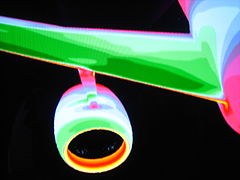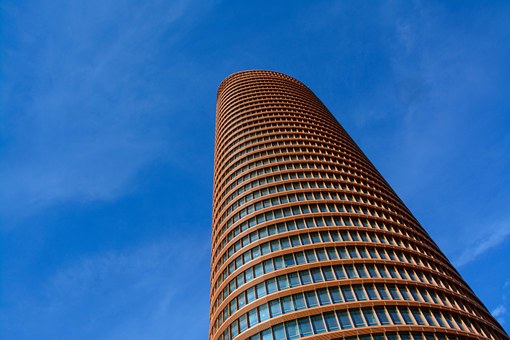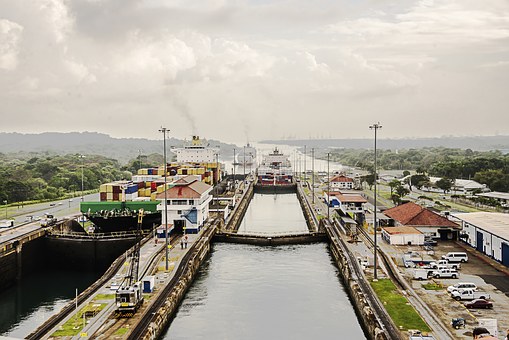Computer modeling gives archaeologists the means to represent data. These computer models can then be modified as new data is collected. There are many applications available to develop these computer models. One such example of computer modeling being used in the field of archaeology is the Pompeii Forum Project. These computer models of ancient buildings are useful to archaeologists as well as to the general public because they allow people to see how non existent builds may have looked.
Computer modeling is no longer just used to make movies like Toy Story. Archaeology is a field that is also using computer modeling. Computer modeling gives archeologists a way to take all of their data and theories and make a three-dimensional. They are able to reconstruct ancient buildings that have been ruins for hundreds of years. Not only does computer modeling allow them to make a three-dimensional picture of the structure, it makes it easy for them to go back and change the picture when they receive new information. In order to understand the importance of computer modeling to archaeologists, we must first understand computer modeling.
What is a Computer Model?
To get the full concept of a computer model, first think of a photograph of an object. A photograph looks identical to the object but instead it is flat, two-dimensional. Also, a photograph may appear to be a very accurate representation of the real world, but in many ways, it is not. From a photograph, one cannot tell the true dimensions or, more importantly, how that object interacts with the other objects around it. Sometimes the dimensions may be distorted depending on the angle at which the picture was taken. For instance, imagine yourself sitting directly in front of a computer and you are taking a picture of it. The picture will show how tall and wide the computer is, but it will not show the depth of how far back the computer extends. A computer model is able to overcome many of the limitations present in using photographs. A computer model resembles a photograph, but it is three-dimensional. The aim of a computer model is to represent the real world as accurately as possible. Computer models do this in two ways: it can be a static computer model or a dynamic computer model. Static computer models are used to represent a specific instance of the world at a given moment in time. Dynamic computer models are used to show how events unfold over a period of time [1].
Why Archeology is Using Computer Modeling
Computer modeling is beneficial to archaeology because it provides a way to represent data three-dimensionally for the purposes of publishing results, recording and research [1]. This gives archaeologists the opportunity to recreate buildings that no longer exist. Computer models also give archaeologists the flexibility of designing and re-modifying models (Fig. 1), as new information is gathered. Also different models of the same buildings can be built and compared. These differently designed models could represent how the building looked at different periods of time or different theories of how the building may have looked.
Computer Applications Available to Create Models
There are many computer applications that are available to make computer models. A few applications currently used to reconstruct ancient builds are Autodesk’s AutoCAD (Computer Aided Drafting), CART (Computer Aided Recording Tool), and Kinetix’s 3D Studio Max. AutoCAD and 3D Studio Max provides a user-friendly way to develop three-dimensional drawings on the computer. CART on the other hand converts coordinate information into three-dimensional CAD model without the user having to do any of the drafting manually. It does this by reading a database containing points and related information and takes that information and turns it into a CAD model that is fully linked to the database that drew it. There are two components to the CART system. The first component is automatic drafting software that takes a database containing points and other information about those points and generates an AutoCAD model. The second component is a suite of tools to build the database from different data sources available. Some examples of data sources used to build such a database are survey data, plane-table measurements, hand measurements using running dimensions, paper drawings, photographs, and previous CAD models. The CAD model produced is composed of unique objects and each of these objects has at least one link to a database that provides more information about the object [2].
A Project Using Computer Modeling, Pompeii Forum Project
Through the use of these types of tools many different projects have been implemented to reconstruct ancient builds. Such an example is The Pompeii Forum Project at the University of Virginia’s Institute for Advanced Technology in the Humanities. The project is aimed at creating three dimensional computer models of ancient structures that were found in the center of the city, called the forum. In the year 62 AD, a devastating earthquake shook the city of Pompeii, destroying its beautiful buildings and landmarks. The city was rebuilt after the earthquake, but on August 24, 79 AD, another disastrous event buried the city of Pompeii, destroying their civilization once again. The eruption of Mt.Vesuvius completely destroyed the city, but by using computer modeling, archeologists hope to create an account of the city life between the time of the earthquake and the complete destruction of the city by the volcanic eruption. By reconstructing these structures located in the forum, the researchers are hoping to discover how the citizens of Pompeii may have rebuilt the city. Unfortunately, the reconstruction of the forum has been a challenging task because the form and face of the forum is believed to have changed with each political incarnation of the city. Luckily, the remains of the forum provide some visual history from when Mt. Vesuvius erupted. The main goal of the project is to provide the first systematic documentation of the architecture and decoration of the forum and to interpret this evidence as it pertains to the city’s urban history [3].
Researchers and students working on this project use photogrammetry and virtual reality modeling language (VRML). Photogrammetry is the use of photographs to derive a three dimensional geometry. The three dimensional models are then generated by the EOS Systems Photomodeler program. With the EOS Systems Photomodeler, surface textures from the photographs are mapped onto the model so that the model shows not only the geometry of the structure, but it also the surface material and texture. Moreover, the model can then be viewed and studied at every angle [3]. A current example of photogrammetry is the model of Marcellum, a large market building. The team working on this project uses about 100 photographs. Since there are manage so many photographs, the team uses a process they developed they call “stitching.” Stitching is a four-step process that allows the team to create a large VRML model of the building by joining smaller models that have been created. The large building is broken up into groups of six to ten photographs. The geometry of each group of pictures is calculated, and then these parts are stitched together at the points where they overlap. This is when the four-step process comes in. The process of merging is as follows:
- Step 1. Identify corresponding regions of triangles between the two models.
- Step 2. Calculate a transformation that roughly aligns the two models. A transformation is when you take coordinates in one picture and converts it to coordinates between the two pictures.
- Step 3. Use the above calculation to calculate a more accurate transformation.
- Step 4. Then the matched vertices are merged producing one complete model [3].
Issues Concerning the Use of Computer Modeling
Issues have arisen from the usage of computer modeling to reconstruct ancient structures. One of the most pressing issues affecting computer modeling today is the inability for a person looking at the model to differentiate real data from data reconstructed based on theory or imagination. One possible solution to this problem is the usage of different colors and textures to distinguish between the real data and reconstructed data [4]. Similar to the previous issue, archeologists have a difficult time clearly representing the types of materials used in their computer representations. To address this issue objects in the computer model are painted with artificial colors and textures.
Other Projects That Use Computer Modeling
The Pompeii Forum Project is not the only project of its kind. There are many projects using computer modeling to reconstruct ancient structures. Some examples are reconstruction of the Theater of Dionysus (hyperlink) http://csawa.brynmawr.edu/web1/Fall97/nl9705.html and the Corinth Computer Project (hyperlink) http://corinth.sas.upenn.edu/corinth.html, aimed at reconstructing the ancient city of Corinth.
Computer modeling has become very important to the field of archaeology. The many tools now available allow archeologists to turn data collected into three dimensional images that can be better studied and analyzed. Even if structures are poorly preserved, different interpretations can be made to represent different theories. This enables archeologists to compare different designs of the structures. These models help to better understand how the inhabitants at that time may have lived. These advantages benefit everyone-archeologists, scholars and the general audience. This computer technology has had a great impact on the field of archaeology as well as on anyone who is interested in learning more about ancient cities.




